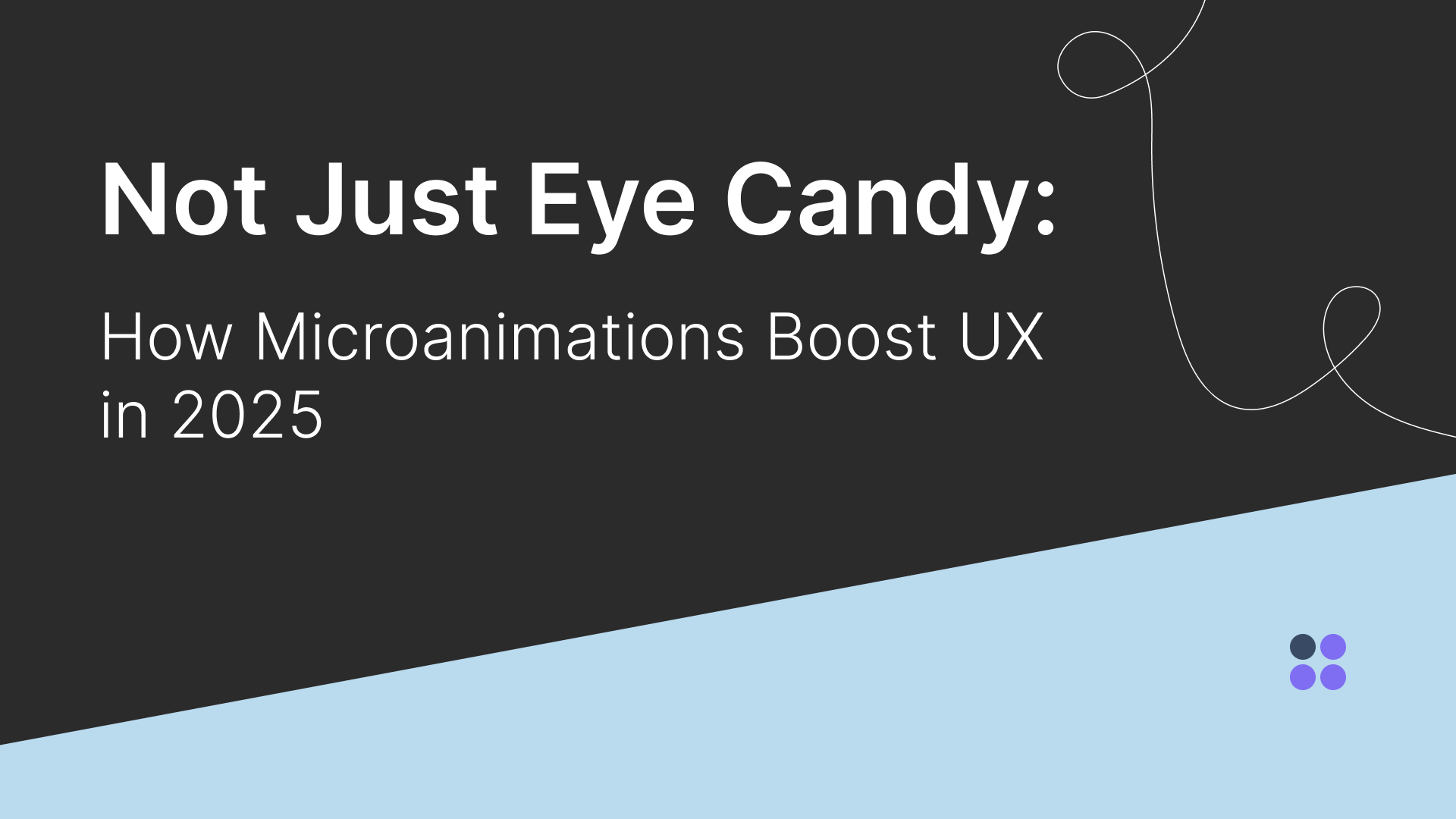
Not Just Eye Candy: How Microanimations Boost UX in 2025
Flat, lifeless interfaces are quickly becoming a thing of the past. In 2025, user experience is about more than just getting from point A to point B. It’s about how a product feels – how it responds, guides, and even delights in the smallest ways. That’s why more design teams are working with specialists like Techtio to bring microinteractions and microanimations into the spotlight.
These tiny, often unnoticed design moments are what bring digital products to life. Think of a heart icon that gently pops when tapped, or a loading animation that makes waiting feel just a little more human. They’re not just visual fluff. They help users understand, react, and stay engaged.
Let’s take a closer look at how these subtle touches are changing the way we interact with digital experiences.
What Are Microinteractions, Really?
At their core, microinteractions are those moment-by-moment feedback loops that guide, inform, and reward the user. You see them when:
- A toggle switch slides from off to on
- A password field shows a green checkmark when your entry meets all criteria
- A heart icon fills in when you like a post
These aren’t big animations or flashy effects. They’re purposeful, user-centered interactions that do one job at a time (and do it well!).
Why Do Microinteractions Matter?
Because they make users feel something.
In a world where almost every app or website offers the same basic functionality, user experience is what sets you apart. A polished microinteraction can be the difference between someone feeling frustrated – or feeling in control.
A recent study in the field of applied psychology showcased that smooth, thoughtful animations reduce cognitive load. They give feedback, signal transitions, and help users understand “what is going on” without overwhelming them.
Microanimations: The Visual Language of 2025
So, where do microanimations fit in?
Microanimations are a close cousin of microinteractions. Think of them as the visual flourishes that make those interactions feel more natural. A bouncing button. A sliding menu. A subtle hover effect.
In 2025, the design trend is clear: static interfaces feel outdated. Users expect fluid, cinematic experiences that feel effortless. Interfaces that move with them, not against them.
A great example is Apple’s Vision Pro onboarding flow. From the moment users first interact with the interface, they’re guided by smooth, spatial animations that respond to eye and hand movements in real time. Every transition feels intentional and natural, helping users intuitively understand how to navigate a completely new interaction model.
However, that doesn’t mean you need to turn your site into a cartoon. It means using motion with intention – in order to guide attention, signal changes, and make the interface more human.
Examples of Microinteractions You Already Love
Still unsure? Let’s look at some familiar examples of microinteractions that might surprise you:
- Instagram’s heart pop when you double-tap a photo
- Slack’s animated loader, which makes waiting a little less annoying
- Spotify’s progress bar pulse, giving subtle feedback during playback
- Gmail’s swipe gesture, complete with haptic and visual confirmation
These aren’t just “cool” features – they increase engagement and reduce user frustration.
They’re functional, beautiful, and addictive (in the best way).
Microinteractions in UI: A UX Designer’s Secret Weapon
UX professionals know that design isn’t just about screens and color palettes. It’s about behaviour.
That’s why microinteractions in UI have become a key focus for teams in 2025. Whether you’re building an app, a website, or an embedded interface, users want a responsive experience that mirrors real-world physics and expectations.
Interactive web design elements like scroll-triggered reveals, animated tabs, and swipe confirmations are more than trends – they’re now standard practice.
What Does a Motion Designer Focus on in UX Design?
If you’re wondering what a motion designer actually does on a UX team—here’s the answer: they make the invisible feel visible.
A motion designer doesn’t just animate logos or intros. They help users:
- Understand system status
- Predict the results of actions
- Navigate more intuitively
- Feel emotionally connected to the product
By working closely with product and UX teams, motion designers ensure that every transition, click, and swipe has a purpose.
Microanimations and Conversion Rates
This isn’t just about aesthetics. Thoughtful microanimations can directly boost conversion rates:
- Up to 70% higher conversions on sites that use engaging microinteractions.
- 20–25% uplift in conversion seen in A/B tests when subtle motion is added.
- Research from Forrester shows up to a 200% jump in conversions due to well-designed UI – and that includes microinteractions.
Why this matters:
- A satisfying tap or hover gives users immediate feedback, making them feel in control and more confident
- Clear visual responses prevent confusion, cutting drop-offs and form errors
- Delightful animations leave a positive impression (people return to products they enjoy using)
Together, these micro‑moments add up. When users feel seen, guided, and entertained, they’re more likely to complete a purchase, sign up, or come back again.
Therefore, if you’re ready to turn every tap, swipe, and hover into a moment that engages and converts, reach out to Techtio. Let’s create user experiences that don’t just function – but captivate and sell!
Have any question?
Do not hesitate to contact us. We’re a team of experts ready to talk to you.
Your Opinion Matters!
Your feedback is important to us and we would greatly appreciate your thoughts on this article! Please let us know if you liked it so we can improve our content in future:
Get in touch!
For any questions or concerns, you may contact us using the following details
- + (357) 25 256 865
- [email protected]


